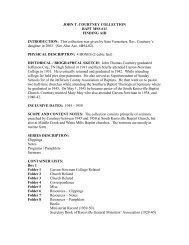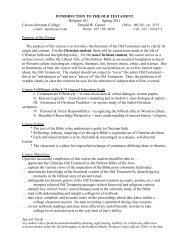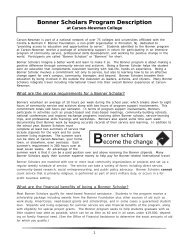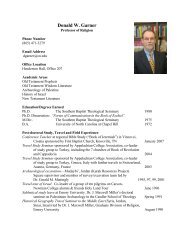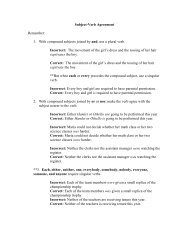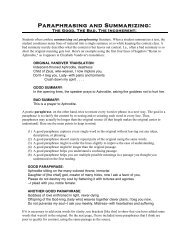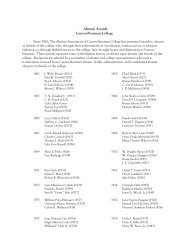Lamb wave assessment of fiber volume fraction in composites
Lamb wave assessment of fiber volume fraction in composites
Lamb wave assessment of fiber volume fraction in composites
Create successful ePaper yourself
Turn your PDF publications into a flip-book with our unique Google optimized e-Paper software.
TABLE I. Destructive test results to determ<strong>in</strong>e <strong>fiber</strong> <strong>volume</strong> <strong>fraction</strong> FVF.<br />
f<strong>in</strong>ed as were estimated us<strong>in</strong>g common matrix values found <strong>in</strong><br />
Sample Layers Target FVF Destructive FVF Thickness mm<br />
Q 11 m 4 Q 11 n 4 Q 22 2m 2 n 2 Q 12 4m 2 n 2 Q 66 ,<br />
Q 22 n 4 Q 11 m 4 Q 22 2m 2 n 2 Q 12 4m 2 n 2 Q 66 , 5<br />
40-1 16 0.40 0.380 2.00<br />
50-1<br />
60-1<br />
16<br />
16<br />
0.50<br />
0.60<br />
0.529<br />
0.590<br />
1.78<br />
1.57<br />
Q 12 m 2 n 2 Q 11 m 2 n 2 Q 22 m 4 n 4 Q 12 4m 2 n 2 Q 66 ,<br />
65-1 16 0.65 0.659 1.35 where mcos() and ns<strong>in</strong>(). The angle is def<strong>in</strong>ed as<br />
70-1 16 0.70 0.690 1.35 positive for a counterclockwise rotation from the primed<br />
40-2 32 0.40 0.395 3.84<br />
lam<strong>in</strong>ate axes to the unprimed <strong>in</strong>dividual lam<strong>in</strong>a axes.<br />
50-2 32 0.50 0.518 3.40<br />
60-2 32 0.60 0.580 3.40 From Eq. 5, the Q ij for the 0° and 90° lam<strong>in</strong>as are given by<br />
65-2 32 0.65 0.660 2.72<br />
70-2 32 0.70 0.690 2.72<br />
Q 11 0 deg Q 11 , Q 11 90 deg Q 22 ,<br />
Q 22 0 deg Q 22 , Q 22 90 deg Q 11 ,<br />
6<br />
II. LAMB WAVE MODEL<br />
Q 12 0 deg Q 12 , Q 12 90 deg Q 12 .<br />
For a lam<strong>in</strong>ated composite with the 1-axis def<strong>in</strong>ed as the<br />
<strong>fiber</strong> direction, the 2-axis transverse to the <strong>fiber</strong>s, and the<br />
3-axis be<strong>in</strong>g out <strong>of</strong> the plane <strong>of</strong> the plate, the stress–stra<strong>in</strong><br />
relationship <strong>in</strong> an <strong>in</strong>dividual lam<strong>in</strong>a is given by 18<br />
The velocity <strong>of</strong> the extensional plate mode can be related<br />
to the <strong>in</strong>-plane stiffness <strong>of</strong> a composite. 19 For propagation<br />
<strong>in</strong> the 0° and 90° directions, these stiffnesses are A 11 and<br />
A 22 , respectively. The extensional plate mode velocity is<br />
related to the stiffness by<br />
1 11 Q 12 0<br />
2 Q 12 Q 22 0<br />
6Q 0 0 Q 66 1<br />
2<br />
1 v 1 A 11<br />
h<br />
6,<br />
for propagation <strong>in</strong> the 0° direction and by<br />
7<br />
where and represent the normal and shear stresses, respectively,<br />
and and represent the normal and shear v 2 A 22<br />
h<br />
stra<strong>in</strong>s, respectively. The Q ij are the reduced stiffness components<br />
8<br />
and are def<strong>in</strong>ed <strong>in</strong> terms <strong>of</strong> the eng<strong>in</strong>eer<strong>in</strong>g param-<br />
eters as 18<br />
for propagation <strong>in</strong> the 90° direction. The values for the <strong>in</strong>plane<br />
stiffnesses A 11 and A 22 can be calculated us<strong>in</strong>g Eqs.<br />
2–6 if the eng<strong>in</strong>eer<strong>in</strong>g stiffnesses <strong>of</strong> the composite are<br />
Q 11 E 1 /1 12 21 ,<br />
known. If the density, , and overall thickness <strong>of</strong> the plate, h,<br />
Q 22 E 2 /1 12 21 ,<br />
2<br />
are known as well, then the extensional mode velocity <strong>in</strong> the<br />
0° and 90° directions can be computed us<strong>in</strong>g Eqs. 7 and<br />
8.<br />
Q 12 12 E 1 /1 12 21 ,<br />
The effect <strong>of</strong> <strong>fiber</strong> <strong>volume</strong> <strong>fraction</strong> on composite lam<strong>in</strong>a<br />
parameters can be derived from a simple rule <strong>of</strong> mixtures<br />
where E 1 and E 2 are the Young’s moduli <strong>in</strong> the longitud<strong>in</strong>al<br />
and transverse directions, respectively, and 12 and 21 are<br />
the major and m<strong>in</strong>or Poisson’s ratios, respectively. The Poisson’s<br />
approach. The density takes the form 20<br />
f V f m V m<br />
9<br />
ratios <strong>in</strong> Eq. 2 are not <strong>in</strong>dependent quantities and are<br />
related to each other by 18<br />
and the elastic constants are given by 18<br />
E 1 E 1 f V f E m V m ,<br />
10<br />
21 E 2<br />
<br />
E 12 .<br />
1<br />
3<br />
E m E 2 f<br />
E 2 <br />
,<br />
E 2 f V m E m V f<br />
11<br />
The <strong>in</strong>-plane stiffnesses for the entire plate, A 11 and 12 12f V f m V m ,<br />
12<br />
A 22 , are obta<strong>in</strong>ed by <strong>in</strong>tegrat<strong>in</strong>g the Q ij through the thickness<br />
<strong>of</strong> the plate. These stiffness values are def<strong>in</strong>ed as 19 where is the density, E 1 and E 2 are the longitud<strong>in</strong>al and<br />
transverse moduli, respectively, 12 is Poisson’s ratio, V f is<br />
the <strong>fiber</strong> <strong>fraction</strong>, and V m is the matrix <strong>fraction</strong>. The f and m<br />
h/2<br />
A ij Q ij k dz, i,j1,2, 4 subscripts represent the constituent properties <strong>of</strong> the <strong>fiber</strong><br />
h/2<br />
and matrix, respectively, and quantities without subscripts<br />
represent the composite lam<strong>in</strong>a properties.<br />
where h is the plate thickness and the subscript k represents<br />
each lam<strong>in</strong>a. The Q ij are the transformed stiffness coefficients<br />
which take <strong>in</strong>to account the orientation <strong>of</strong> each ply<br />
with respect to the <strong>wave</strong> propagation direction and are de-<br />
In order to predict the composite properties as a function<br />
<strong>of</strong> <strong>fiber</strong> <strong>volume</strong>, the properties <strong>of</strong> the <strong>fiber</strong> and matrix must<br />
be obta<strong>in</strong>ed. The elastic modulus <strong>of</strong> the matrix was obta<strong>in</strong>ed<br />
from the manufacturer 21 and the density and Poisson’s ratio<br />
1400 J. Acoust. Soc. Am., Vol. 104, No. 3, Pt. 1, September 1998 Seale et al.: <strong>Lamb</strong> <strong>wave</strong> <strong>assessment</strong> <strong>of</strong> <strong>composites</strong> 1400



